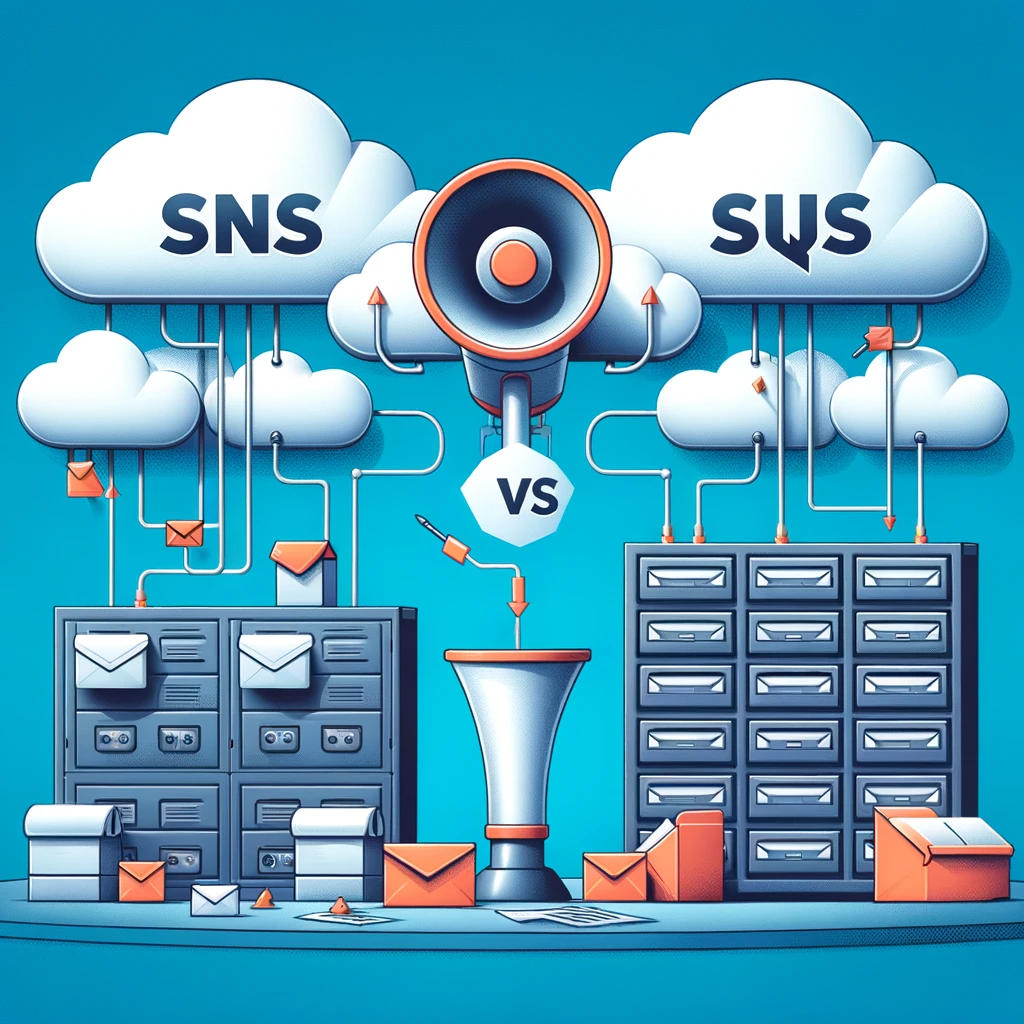Efficient management of network traffic is paramount nowadays. Amazon Web Services (AWS), a leader in cloud solutions, offers a range of load balancers each tailored to specific needs and scenarios. Load balancers act as traffic cops, directing client requests across all servers capable of fulfilling those requests in a manner that maximizes speed and capacity utilization, thereby ensuring no single server is overwhelmed. This article delves into the four types of AWS Load Balancers: Application Load Balancer (ALB), Network Load Balancer (NLB), Gateway Load Balancer (GLB), and Classic Load Balancer (CLB), shedding light on their unique characteristics and real-life applications.
Application Load Balancer (ALB)
ALB operates at the application layer of the OSI model. It’s adept at managing HTTP and HTTPS traffic, offering advanced routing features designed for modern application architectures, including microservices and containers.
Within its domain at the application layer of the OSI model, the ALB emerges as a maestro of traffic management, deftly handling HTTP and HTTPS requests. Its capabilities extend far beyond simple load distribution. Imagine a bustling marketplace where each stall represents a microservice or container; the ALB is like the astute market organizer, directing customers to the right stall based on what they seek.
This discernment is possible because ALB can base its redirection decisions on the path specified in the URL, akin to a guide knowing each alley and avenue. But it doesn’t stop there. It listens—configuring rules that can deftly redirect traffic based on the path, yes, but also on the protocol, the port, the hostname, and even the original query parameters. It’s like having a concierge who not only knows the building inside out but also caters to the specific needs of each visitor, whether they need to go to the top floor via the elevator or take the stairs to the second level.
Each rule that the ALB follows is like a chapter in a storybook, with a clear beginning and an end. It must contain exactly one action—either to ‘forward’, ‘redirect’, or provide a ‘fixed-response’. And in the narrative of network traffic, this action is the climax, the decisive moment that must come last.
Further sweetening the plot, the ALB can also act as a guardian of security protocols, effortlessly converting insecure HTTP requests into secure HTTPS, much like a chameleon changes its colors for protection. Thus, the ALB ensures that not only is the traffic managed efficiently, but it also upholds the security standards expected in today’s digital era.
Through these multifaceted capabilities, the ALB not only supports modern application architectures but does so with the finesse and adaptability befitting the dynamic and varied demands of contemporary web traffic.
Use Case: E-commerce Website Consider an e-commerce website experiencing fluctuating traffic. ALB steps in to distribute incoming HTTP/HTTPS traffic across multiple targets – such as EC2 instances, containers, and IP addresses – in multiple Availability Zones. This distribution optimizes the performance and ensures high availability. For example, during a flash sale, ALB can dynamically adjust to the increased traffic, maintaining a seamless shopping experience for customers.
Network Load Balancer (NLB)
NLB operates at the fourth layer of the OSI model. It’s designed for low-latency and high-throughput traffic, handling millions of requests per second while maintaining ultra-low latencies.
Envision the Network Load Balancer (NLB) as the steadfast sentinel of AWS, standing guard at the fourth layer of the OSI model. Crafted to master the unpredictable ebbs and flows of web traffic, the NLB is the infrastructure’s backbone, ensuring that high-performance demands are met with the grace of a seasoned conductor.
As it orchestrates traffic, the NLB shows a remarkable capacity to direct millions of requests per second, all the while maintaining a composure of ultra-low latencies. Picture a vast network of highways within a supercity—high-speed, high-volume, and complex. The NLB is like the ultimate traffic control system within this metropolis, routing vehicles efficiently to their destinations, be they sleek sports cars (representing TCP traffic) or utility vehicles (UDP traffic).
Operating at the connection level, the NLB directs each request with precision, tapping into the rich data of the IP protocol. It ensures that every packet, like a message in a bottle, finds its way across the digital ocean to the right island, be it an Amazon EC2 instance, a microservice, or a container nestled within the expansive Amazon VPC.
One of the NLB’s most striking features is its transparency. When a client reaches out through the vast web, the NLB preserves the original IP address. It’s as if the client directly hands a letter to the server, without the mediating hand of a middleman, allowing backend systems to see the true source of the traffic—a crucial detail for nuanced application processing.
The NLB is not only about directing traffic. It offers the solid reliability of static IP support and seamless integration with other AWS services. It’s capable of distributing loads across multiple ports on the same EC2 instance, a feat akin to a juggler flawlessly managing several pins at once. This flexibility makes the NLB an indispensable tool for high-performance applications that demand not only robust traffic handling but also specific features tailored for low latency and high throughput requirements.
In essence, the NLB stands as a testament to AWS’s commitment to providing robust, high-performance solutions that cater to the intricate needs of modern, traffic-heavy applications. It is a powerhouse, engineered to deliver unparalleled performance, proving itself as an indispensable asset in the realm of cloud computing.
Use Case: High-Traffic Social Media Platform Imagine a social media platform during peak hours, like after a major event. NLB can efficiently handle the sudden spike in traffic, distributing it across the servers without any time lag. This capability ensures that user experience remains consistent, even under the strain of massive, sudden traffic loads.
Gateway Load Balancer (GLB)
GLB is a recent addition to AWS’s load balancing suite. It combines a transparent network gateway with a load balancer, making it simpler to deploy, scale, and manage third-party virtual appliances.
Picture the Gateway Load Balancer (GLB) as the innovative craftsman in AWS’s load balancing guild. It stands out with its dual nature, merging the simplicity of a network gateway with the robustness of a load balancer. This combination ushers in a new era of deploying, scaling, and managing the virtual appliances that form the backbone of network security and optimization.
Consider the GLB as a masterful conductor in an orchestra, where every instrument is a third-party virtual appliance. Under its baton, the traffic flows harmoniously through each section, scaled perfectly to the demands of the symphony’s crescendos and decrescendos. This conductor is gifted with a unique ability to scale these appliances effortlessly, growing or shrinking the ensemble as the audience—here, the network traffic—waxes and wanes.
The GLB’s home is at layer 3 of the OSI model, where it navigates the complexities of network traffic with an air of nonchalance. It is state-agnostic, meaning it does not need to be privy to the inner workings of each packet’s journey, much like a postal system that delivers mail without needing to know the content of the letters.
As the GLB directs traffic through PrivateLink, it ensures a secure passage, akin to a network of secret tunnels within AWS’s infrastructure. This pathway keeps the traffic shielded from the prying eyes of the Internet, an invisible and secure transit that is both efficient and private.
With GLB, scaling the virtual appliances becomes a matter of course. Imagine a fleet of boats navigating a canal; as the water level rises or falls, the fleet adjusts accordingly, ensuring delivery is uninterrupted. Similarly, GLB’s scalability ensures that services are delivered continuously, adjusting to the tide of network demands.
The deployment of these virtual appliances, often a task likened to assembling a complex puzzle, is simplified through the AWS Marketplace. The GLB transforms this process into a seamless activity, akin to placing magnetized puzzle pieces that naturally fall into place, streamlining what was once a daunting task.
In essence, the Gateway Load Balancer stands as a paragon of AWS innovation—a tool that not only simplifies but also optimizes the management of traffic across virtual appliances. It embodies the forward-thinking ethos of AWS, ensuring that even the most complex load balancing tasks are handled with a blend of simplicity, security, and sophistication.
Use Case: Global Corporation Network For a global corporation with a presence in multiple regions, GLB can distribute traffic across various regional networks. It allows for the central management of security appliances like firewalls and intrusion detection systems, streamlining network traffic and enhancing security measures across all corporate segments.
Classic Load Balancer (CLB)
CLB is the oldest type of AWS load balancer and operates at both the request level and connection level. It’s ideal for applications that were built within the EC2-Classic network.
Imagine stepping back into the early days of cloud infrastructure, where the Classic Load Balancer (CLB) first emerged as a pioneering force. It’s the seasoned veteran of AWS’s load balancing fleet, operating with a dual sense of purpose at both the request level and the connection level.
Think of the CLB as a trusted old lighthouse, guiding ships—here, the application traffic—safely to their harbors, which are the multiple EC2 instances spread across the expanse of various Availability Zones. Its light, steady and reliable, ensures no ship goes astray, increasing the applications’ resilience against the turbulent seas of internet traffic.
This lighthouse doesn’t just blindly send ships on their way; it’s equipped with a keen sense of observation, monitoring the health of its fleet. It directs the vessels of data only towards those docks that are robust and ready, ensuring that each byte of information reaches a healthy instance.
As the tides of internet traffic swell and recede over time, the CLB adapts, scaling its capabilities with a natural ebb and flow. It’s as if the lighthouse can grow taller and shine brighter when the night is darkest, matching the intensity of the incoming vessels.
Within its domain, the CLB is not limited by the generation of the ships it guides. It speaks both the languages of the old and the new, compatible with both Internet Protocol versions 4 and 6 (IPv4 and IPv6). It’s a bridge between eras, catering to applications born in the era of the EC2-Classic network.
The CLB, with its fundamental load balancing capabilities, is well-suited to manage traffic at both the request and the connection level. It’s a testament to the durability of AWS’s early designs, still standing strong and serving applications that were constructed in the dawn of cloud computing.
However, as technology marches forward, AWS has crafted more specialized tools for modern needs—the Application Load Balancer for nuanced Layer 7 traffic, and the Network Load Balancer for high-performance Layer 4 traffic. Yet, the CLB remains an important chapter in the AWS story, a reminder of the cloud’s evolution and a still-relevant tool for certain legacy applications.
Use Case: Transitioning Legacy Application to Cloud A company moving its legacy application to the cloud can use CLB to simplify the process. CLB provides a bridge between the application’s old architecture and new cloud-based environment, ensuring that the transition does not affect application performance or user experience.
Harnessing the Power of AWS Load Balancers
Understanding the nuances of AWS Load Balancers is crucial for architects, developers, and DevOps professionals. Each type of load balancer serves distinct purposes and is suited for specific scenarios, from handling modern, high-traffic applications to transitioning legacy systems into the cloud. Mastery of these tools is key to leveraging the full potential of AWS services, ensuring efficient, scalable, and resilient cloud-based solutions.











